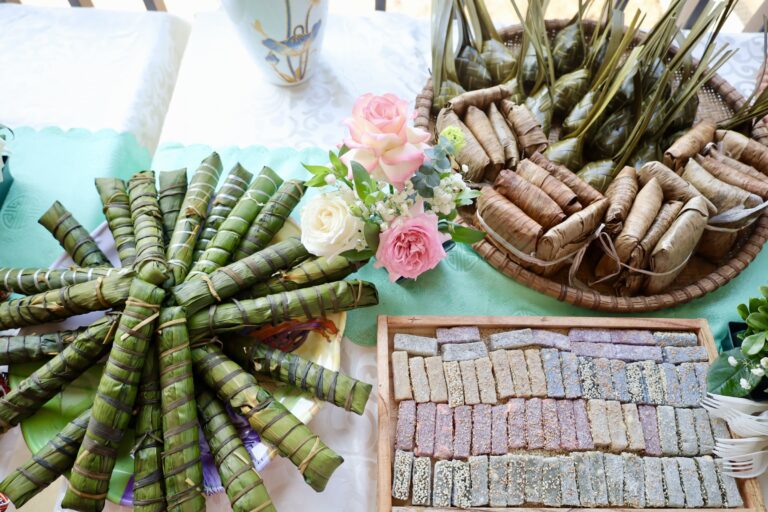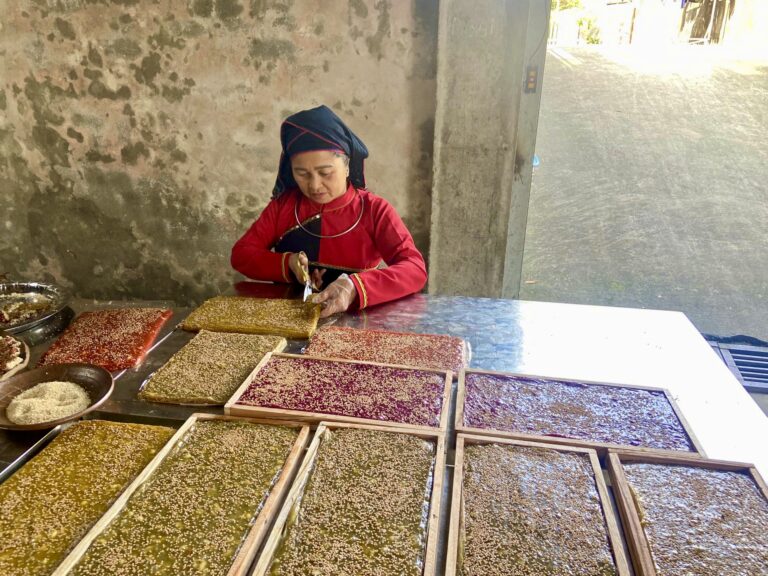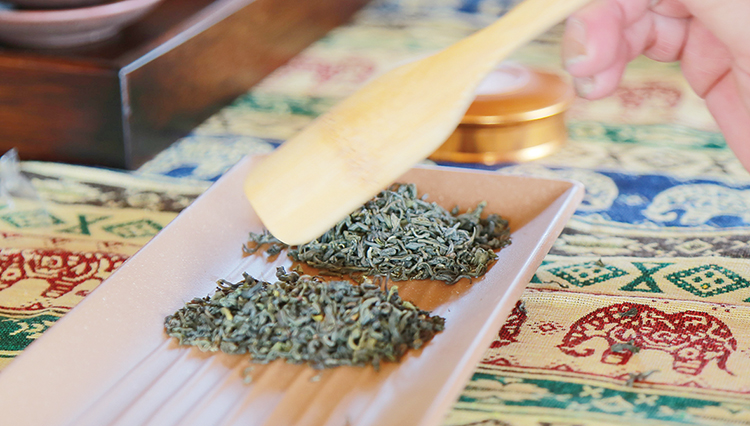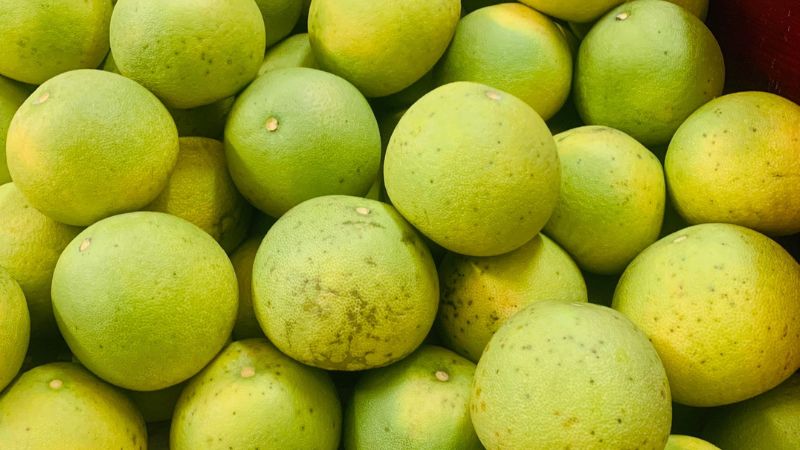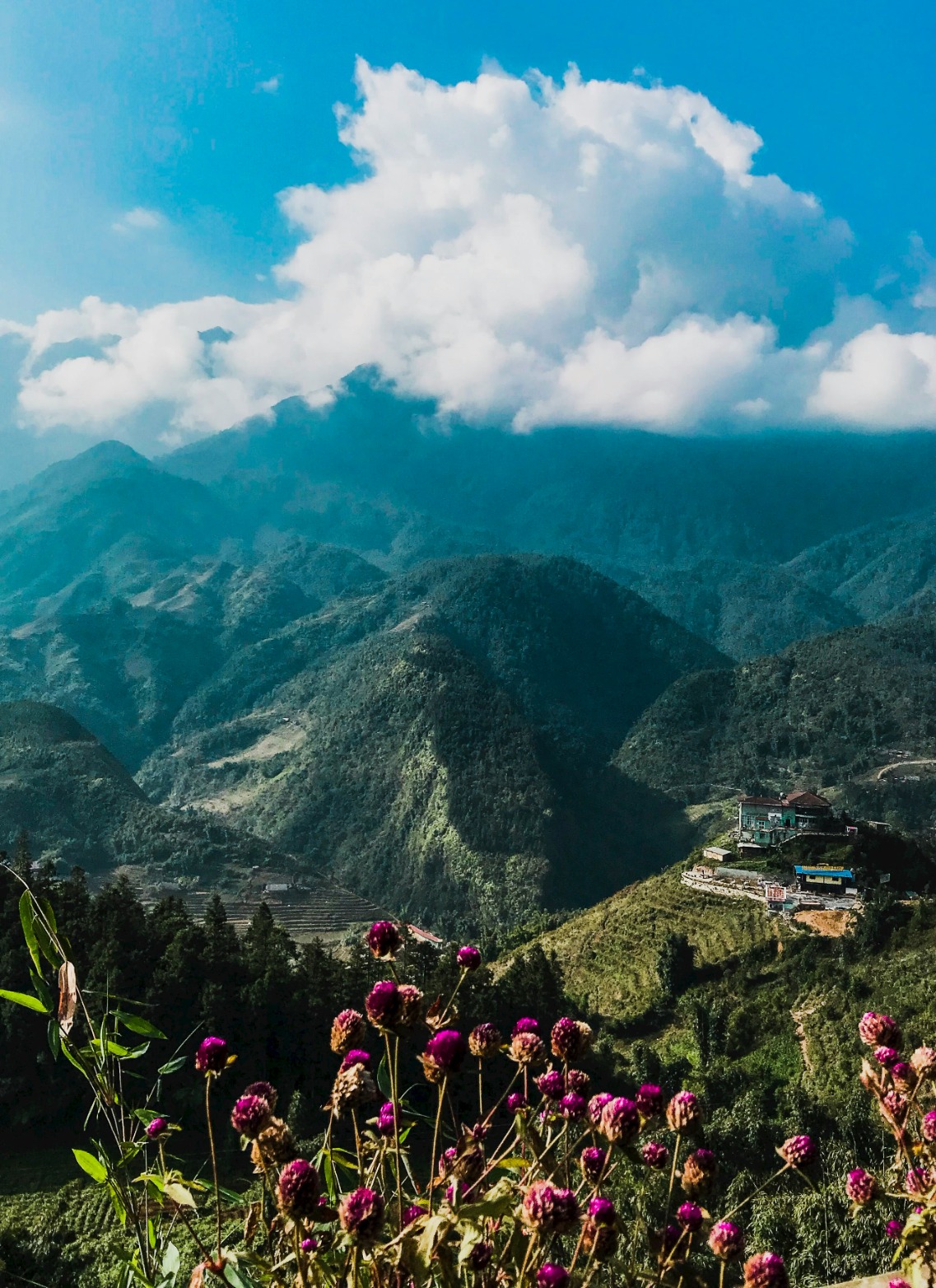Five-Colored Cake: A Famous Specialty of the Cao Lan Ethnic Group in Ngoc Tan Village, Ngoc Quan Commune, Doan Hung District, Phu Tho Province
The Five-Colored Cake is a renowned specialty of the Cao Lan ethnic group in Ngoc Tan Village, Ngoc Quan Commune, Doan Hung District, Phu Tho Province. This simple yet distinctive dish is made from upland sticky rice and natural leaves that provide vibrant colors, creating a fragrant, chewy treat that is unique to this region.

A Tradition of the Cao Lan People
According to villagers, the people of Ngoc Tan have long valued their traditions and rituals. During major village celebrations, such as the temple festivals, the first full moon of the lunar year, the second lunar month festivals, and traditional holidays like Tet 3/3 or Tet 5/5 (lunar calendar), villagers prepare sticky rice, five-colored cake, and other traditional dishes to offer to their ancestors. This tradition has been preserved to this day.
Symbolism of the Five Colors
The Five-Colored Cake of Ngoc Tan Village stands out with its five distinctive colors: white, green, black, red, and yellow, representing the five elements: metal, wood, water, fire, and earth. Each color is derived from natural ingredients: green from pandan leaves, purple from butterfly pea flowers, black from thau leaves, red from ripe gac fruit or red leaves, and yellow from turmeric. These natural ingredients, which have been closely associated with the Cao Lan people for generations, are not only visually appealing but also beneficial to health. Together, these colors blend harmoniously, making the cake visually enticing.
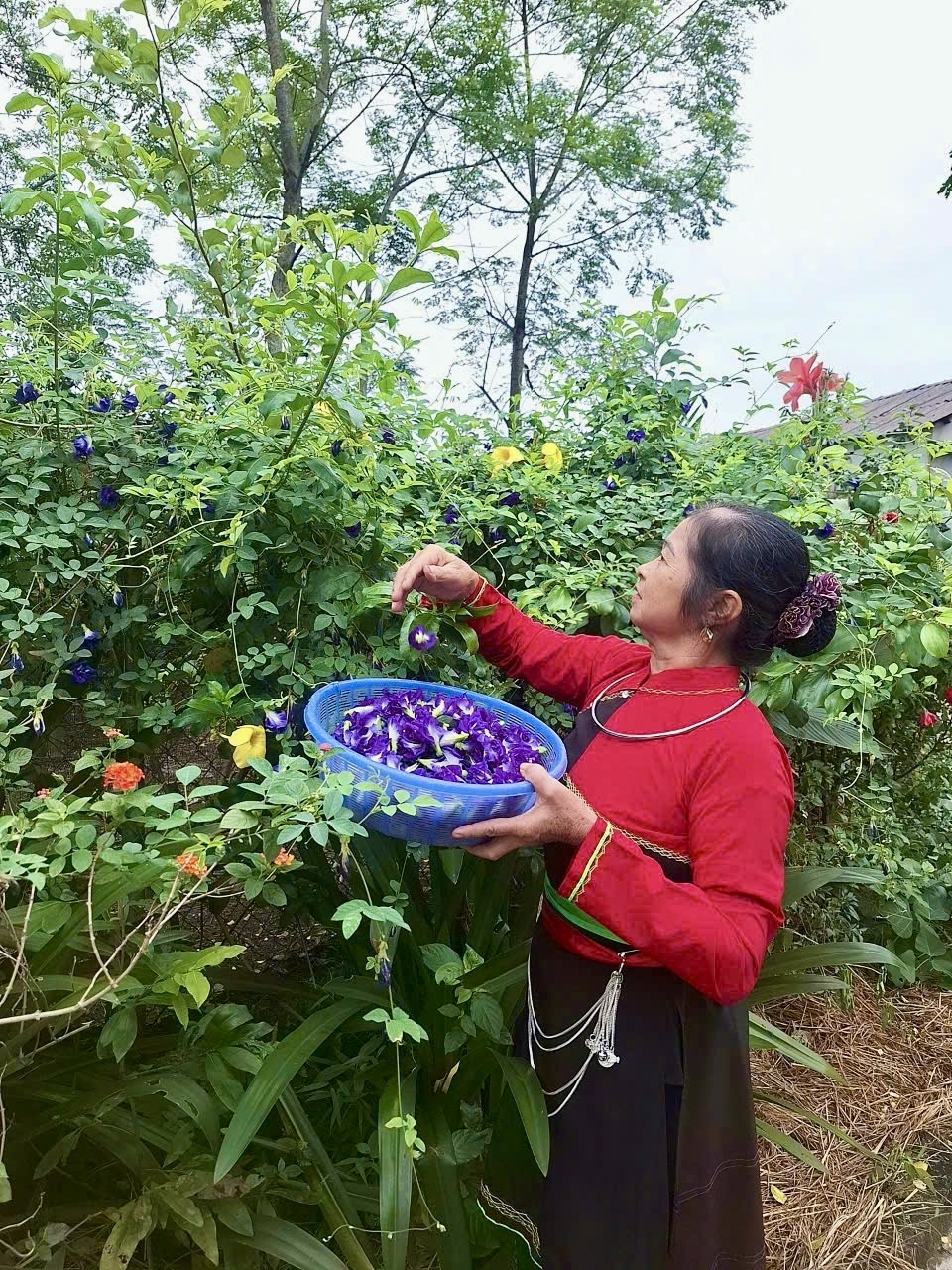
Natural Ingredients for a Healthier Cake
The cake’s primary ingredients include finely ground upland sticky rice, peanuts, sesame seeds, coconut, white sugar, ginger, and malt. Unlike other cakes, the Five-Colored Cake requires meticulous preparation, from ingredient selection to the processing stages. To ensure the best quality, the Cao Lan people choose a specific variety of sticky rice grown in upland fields, known for its ivory color and fragrant, chewy texture. The rice is carefully selected, popped, and then ground into fine flour.
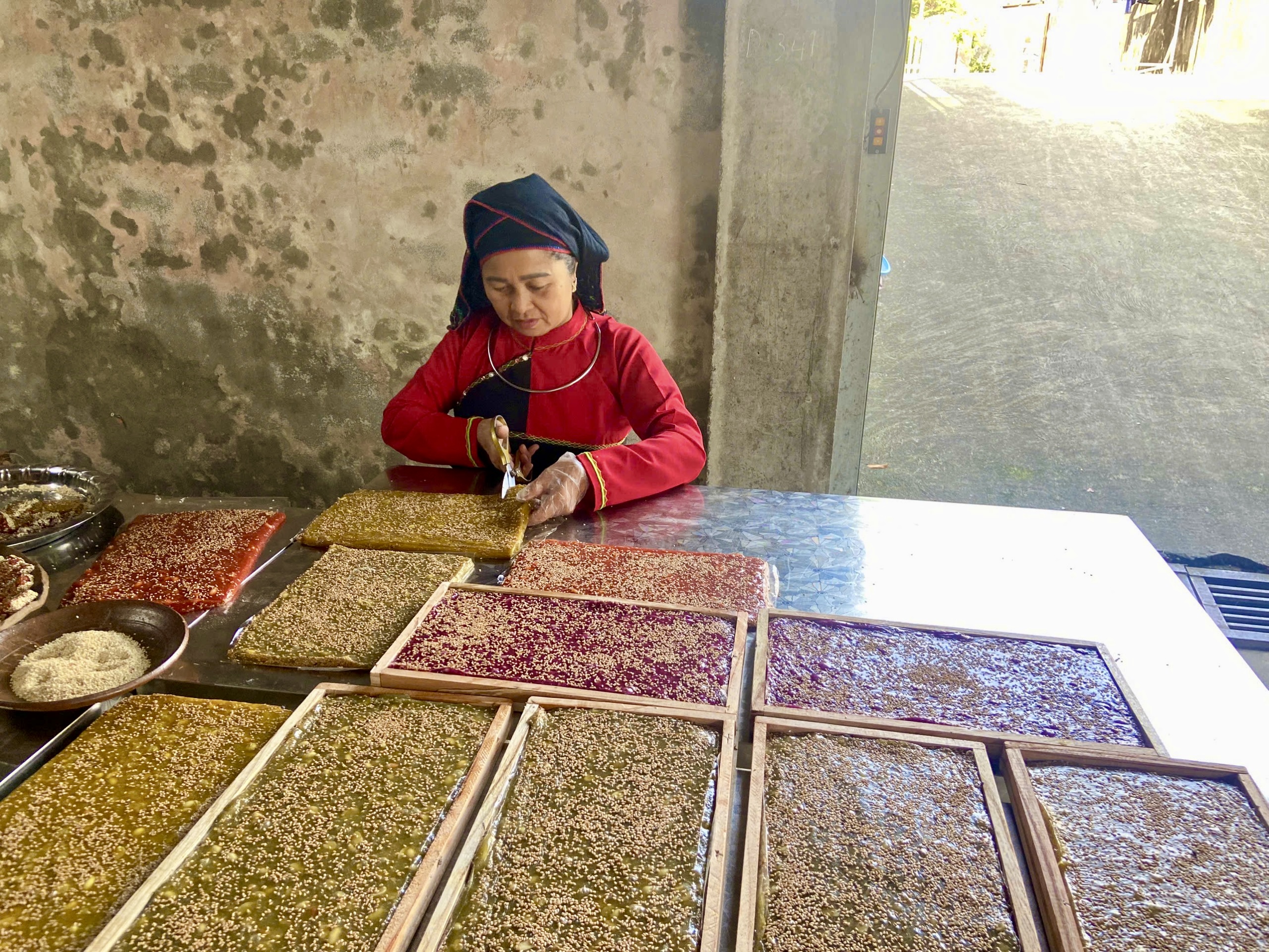
Traditional and Handcrafted Preparation
The next step involves making the syrup and spices. Sugar or sugarcane molasses is combined with malt to create the syrup. This process requires experience to achieve the perfect consistency—neither undercooked nor overcooked—so the syrup remains aromatic and free of any burnt bitterness. When pulled, the syrup should be shiny and translucent. The syrup is then mixed with sticky rice flour, roasted peanuts, fresh ginger, and other ingredients.
Once the mixture is cooked, it is spread onto a table dusted with roasted sticky rice flour to form the cake’s outer layer. The mixture is then kneaded and rolled repeatedly until it becomes chewy and elastic, ensuring the cake's desired texture.
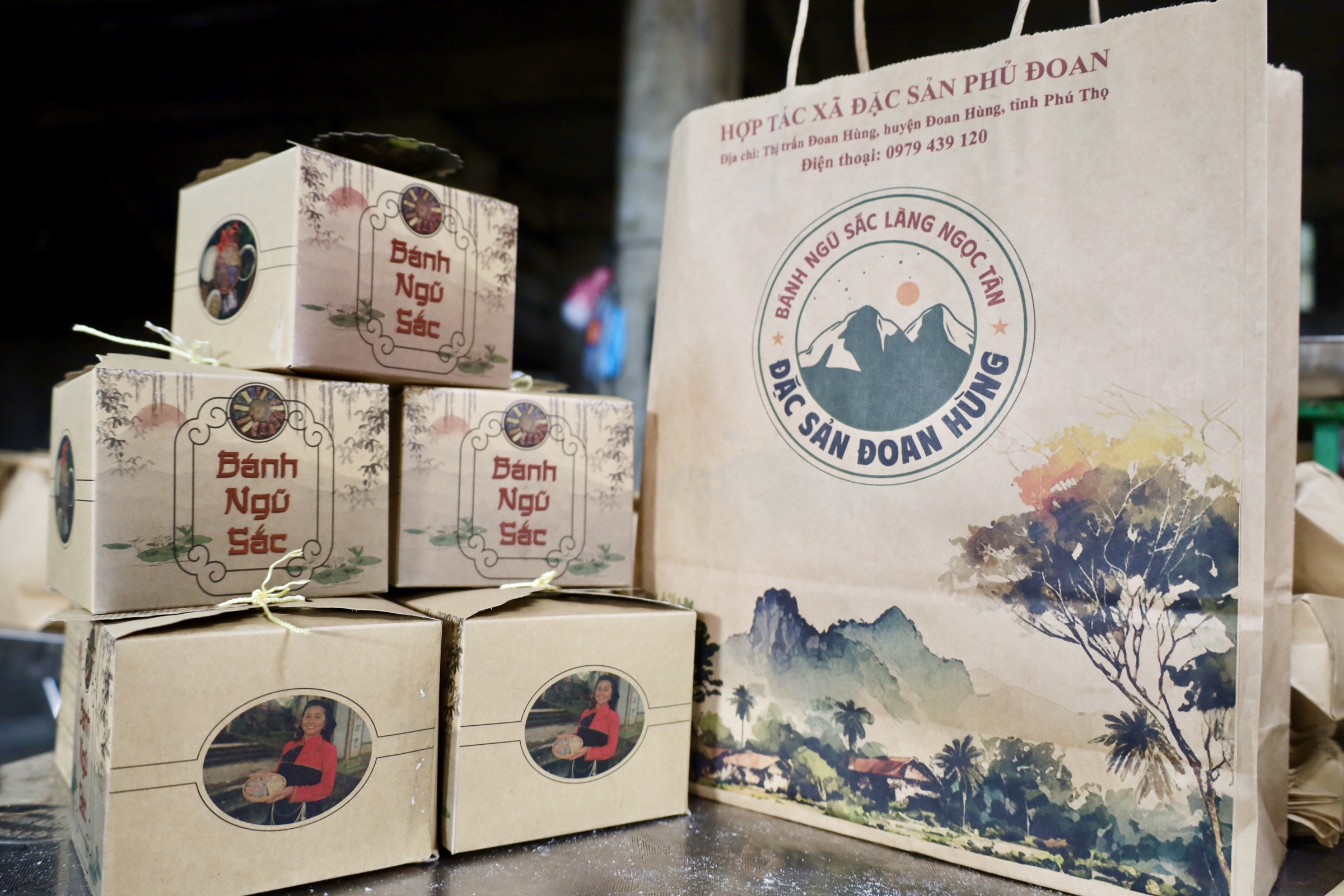
A Local Specialty with Unique Flavor
Enjoying the Five-Colored Cake, visitors can savor the chewy and fragrant texture of upland sticky rice, the mild spiciness of ginger, the rich flavor of peanuts, and the sweetness of sugarcane. A plate of Five-Colored Cake paired with a pot of hot tea reflects the warm and genuine hospitality of the Cao Lan people.
Preserving and Promoting the Tradition
To promote and share this unique cake with a wider audience, Doan Hung District has implemented policies to support the preservation of traditional crafts, including assisting locals in branding, marketing, and introducing products. The establishment of the Phu Doan Specialty Cooperative has played a key role in showcasing local specialties, including the Five-Colored Cake, as part of the district’s culinary and cultural heritage.
Looking ahead, it is hoped that this distinctive Five-Colored Cake and the rich culinary traditions of the Cao Lan ethnic group will continue to gain recognition and appreciation in modern society, ensuring these cultural treasures endure and thrive.
Vinh Ha
Phu Tho Newspaper – baophutho.vn
 VIE
VIE

